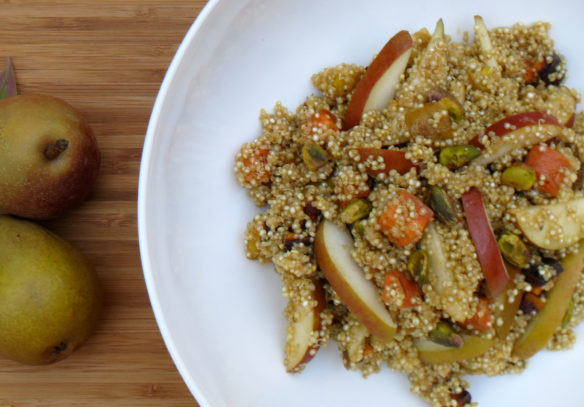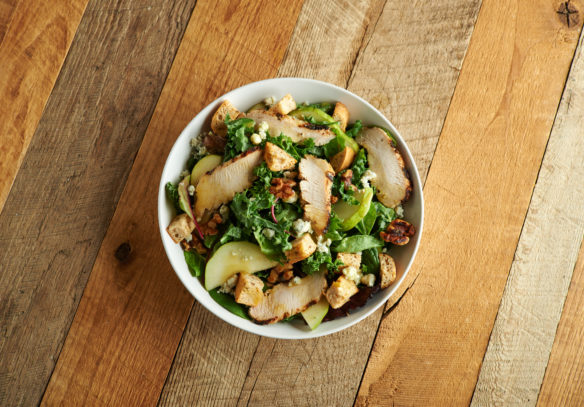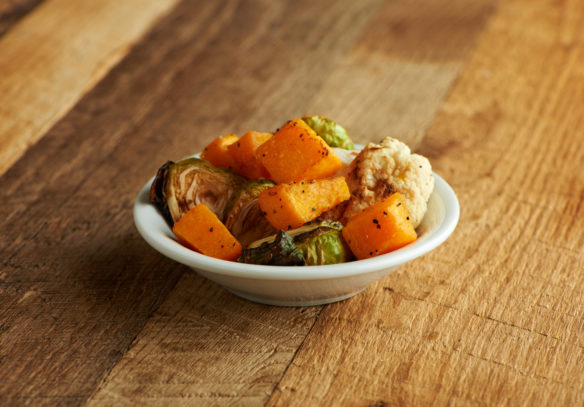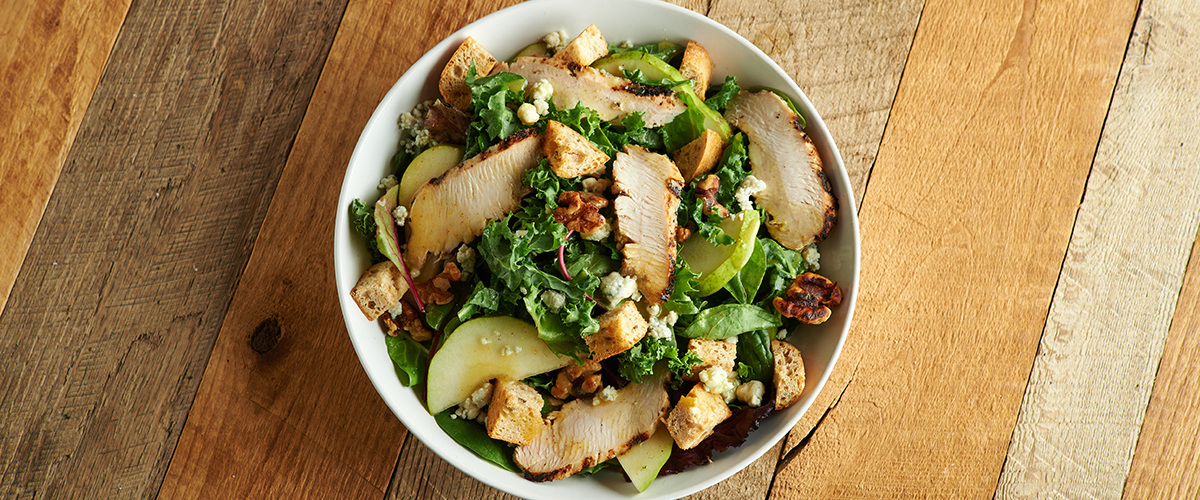As excited as we were for summer’s bounty of juicy watermelon and crisp cucumbers, there’s more to “fall” in love with this autumn alongside football and back-to-school. Starting in September, the autumn harvest brings a variety of healthful and flavorful produce including pears, figs, Brussels sprouts, pomegranates, and parsnips – and our Aramark chefs and partners know just how to prepare them to keep your family enjoying their fruits and veggies throughout the season.

Pears
Pears pack a lot of nutrition in one sweet and juicy package! They’re an excellent source of fiber and a good source of vitamin C plus they’re sodium, fat, and cholesterol free. With ten varieties of USA pears, with different colors, flavors, and textures – there’s a pear for everyone in your family. Reach for a Starkrimson pear if you like them extra soft and juicy, a Concorde if you like them super sweet, or a Bosc if you like yours on the crispy side. Try them in recipes like this Pear Roasted Carrot and Ginger Quinoa Pilaf from USA Pears that makes for a colorful, filling side dish or use pear juice to add a depth of flavor to salad dressings, says Aramark Chef Matthew Thompson. Or if you’re dining with us this fall, give our Chicken, Pear and Walnut Salad a try. Pears are also a perfect partner for wholesome, simple snacks. Slice and enjoy them atop whole-grain toast or dip slices into yogurt or your favorite nut butter and you’re good to go!

Figs
We’ve all heard that tomatoes are really fruits, but did you know that figs are actually inverted flowers? The seeds inside the fig are the real fruit, and give them the gentle crunch we know and love. Figs have long been a part of the Mediterranean diet, and were even used as a training food by early Olympic athletes in Greece! And all for good reason. They’re an excellent source of dietary fiber, rich in antioxidants, and contain more calcium, potassium, and iron than many common fruits. It’s easy to enjoy figs in both savory and sweet dishes, too. Try yours with some shavings of Parmesan cheese and a drizzle of balsamic vinegar or alongside berries with yogurt, in smoothie bowls or with whole grain oatmeal. The possibilities are endless!
Pomegranates
Cherished for their beauty and color, pomegranates often make their way into fall-themed table decorations. Fortunately, their health benefits and versatility are also something worth marveling. You can enjoy pomegranate juice by itself or in a dish like the Pomegranate Council’s Pomegranate Guacamole for a boost of tangy flavor. Pomegranate arils (seeds) can be eaten raw, sprinkled on salads, or used to dress up a variety of dishes while adding a tart yet sweet taste and crunch. These fun fruits are low in calories and a good source of vitamin C, potassium, and fiber. Plus, they have three different types of polyphenols (a type of antioxidant), so you can feel good about enjoying each bite!

Brussels sprouts
They may be small, but Brussels sprouts have a nutritional profile that is anything but. These cabbage cousins are a full of antioxidants, an excellent source of vitamin K, as well as a good source of potassium, vitamin C, and dietary fiber. While kids sometimes scrunch their noses at them, Brussels sprouts can be quite tasty depending on how they’re prepared. For instance, one of our favorite recipes is the Roasted Autumn Vegetables which pairs Brussels sprouts with cauliflower and butternut squash. You can also try them shredded, steamed, sautéed, stir fried, or grilled; you can’t go wrong with this flavorful building block for a side or main dish! Just ask Aramark Chef Tim Zintz. One of his favorite healthy meals is a bowl of roasted Brussels sprouts topped with a little chopped bacon and onions. The saltiness of bacon pairs beautifully with the caramelized, nutty sweetness that emerges when you roast these sprouts in the oven. Chef Matthew Thompson has another tasty option with his baked Brussels chips. Simply toss the leaves of the Brussels sprouts with olive oil and sea salt, bake at 325, and in 5-7 minutes you have a great textural addition to salads, soups and casseroles.
Parsnips
It’s easy to mistake parsnips for pale white carrots, but there’s so much more to this winter root vegetable. They’re richer in flavor, yet very versatile, and contain a wide variety of vitamins and nutrients including dietary fiber, magnesium, potassium, and vitamin C. Their sweet, nutty flavor doesn’t develop until the roots have been exposed to near-freezing temperatures, making the fall and winter the best time to enjoy them. In fact, parsnips are a hidden gem in the culinary toolbox of Chef Thompson in the autumn season. One of his favorite preparations is as a replacement to traditional mashed potatoes. His recipe layers flavors by combining the mashed parsnip with mashed celery root—another abundant fall vegetable—mixing with almond milk and pairing with a mustard gravy. But don’t forget, for larger roots, be sure to cut out the woody inner stem!
Note: Since everyone’s health history and nutritional needs are so different, please make sure that you talk with your doctor and a registered dietitian to get advice about the diet and exercise plan that‘s right for you.

